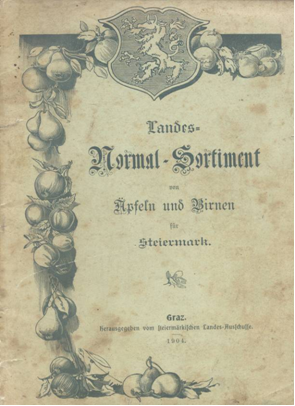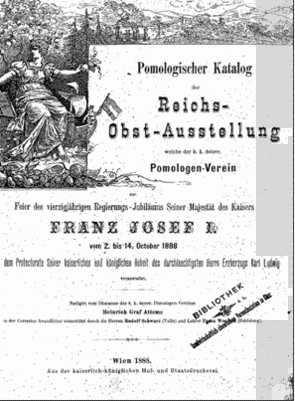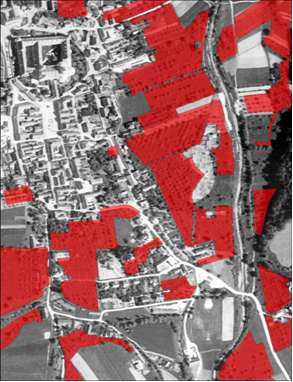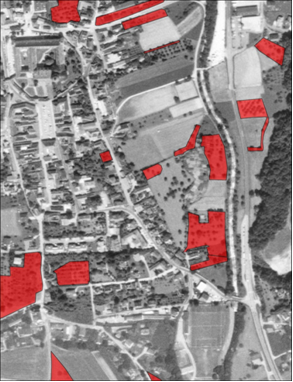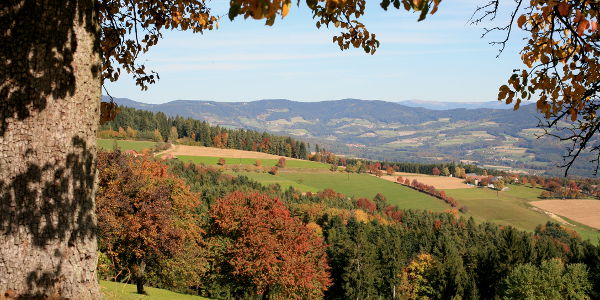
Traditional Orchards in Austria
The use of fruit in Austria is proved since Neolithic times, cultivated fruit varieties were brought to Austria already by the Romans. After a phase of decline, a new revival was consequence of “Capitulare de villis”, the famous book of Charlemagne, at the end of the 8th century. Therein special fruit varieties were recommended to the general public and the beginning of sorted orcharding can also be defined in this times.
In the Middle Ages, orcharding was mainly carried out by monks, knights and rich citizens, who imported fruit varieties from France and Italy.
In Austria, classical pomology and a high diversity of varieties were at their highest level between the end of the 18th and the end of the 19th century. In those times mainly trees with large crowns were cultivated and numerous nurseries emerged.
At the end of the 19th century, an unmanageable high number of varieties, suffering marketing problems , was reduced to so-called 'normal-assortments', which led to a decline of diversity in varieties. The change to plantation systems, beginning in the 1950s and thus massive clearing of orchards in the 1960’s increased that effect.
Front page of the so-called ‘Landes-Normal-Sortiment’ of Styria, 1904. Front page of the pomological catalogue of the ‘Reichs-Obst-Ausstellung’, 1888.
Traditional orcharding is common in all Austrian provinces up to 1.000 m above sea level with the largest orchard areas in Upper and Lower Austria, as well as in Styria and Carinthia.
The estimated number of trees in traditional orchards in Austria is actually about 4.5 millions. This illustrates a decline by about 90% , compared to the highest number of about 33 million trees in the 1950’s. Between the tree censuses of 1967 and 1988, half of the trees were cleared, totalling to 12.5 million fruit trees.
Traditional orchards (red) near Pöllau (Styria). Left: aerial photo 1960; Right: aerial photo 1992, data from 2003.
Traditional Orchards in the southeast of Pöllau
| Number of fruit trees | 1.280 | 337 | 73,67 | 943 |
| Year 1960 | Year 2003 | Degression in percent | Number of trees lost | |
| Area in hectare | 15,443 | 4,145 | 73,18 | - |
Change in size and number of trees in the photos above between 1960 and 2003 (area 54, 241 ha in total).
Main reasons for the reduction of traditional orchards were structural changes in agriculture, in respect of specialisation and the transition to plantation systems and mechanical management.
This combined with a massive price decline, lead the way to diminishment of tree care, new plantings, eventually clearing and last not least disease, such as fire blight and pear decline did the rest.
Orchards in open agricultural landscapes still disappear; nowadays many of them are closely related to houses or farm surroundings.
Over the past two decades, new initiatives brought about some change. Based on high-quality products (juice, cider, brandy, dried fruit,…) and modern marketing, as well as geographical indications, profit from traditional orchards is possible (e.g. Pöllauer Hirschbirne, Mostviertler Birnenmost, …). Orchard management is becoming better again, new plantings are evident. Nevertheless most orchards are overaged and the preservation of an estimated 3.000 Austrian fruit varieties is not at all guaranteed.
However, the bulk part of Austria’s fruit production still comes from traditional orchards. Recent studies show growth at least in some regions. This may partly be encouraged by subsidies for the maintenance and care of orchards from the Austrian agro-environmental programme (ÖPUL). Some provinces also have own models of subsides. In the future, a need for strong effort and innovative ideas to preserve and develop traditional orcharding in Austria remains.

